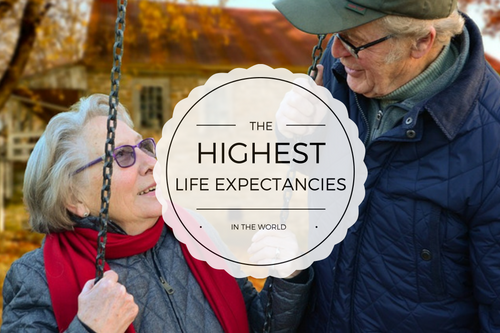Almost everyone wants a long and healthy life for themselves as well as their loved ones. For centuries now, health and medical experts have been hard at work increasing the average lifespan. People today live a lot longer compared to even a century ago. This is mainly possible because of medical advances, increased awareness about health issues, improved techniques for agriculture and food production, and better overall hygiene.The age an individual is expected to make it to is often used to measure the quality of life of a particular region. Many countries are therefore investing a significant amount of time and money in improving the life expectancies of their residents.
Life expectancy can be described as the number of years the population of a particular region is likely to live to from birth, taking environmental and statistical averages into account. There are a number of factors that have an impact on this figure. These include overall lifestyle, eating habits, prevalent health problems, access to healthcare, the environment, and economic status, to name a few. Mortality and morbidity data also have to be considered. Life expectancy is calculated separately for the male and female population, and then the average is calculated for the country. Women usually have a higher predicted lifespan as compared to men (with a few exceptions). Of course, since this metric is calculated based on trends and averages, a person, male or female, may actually live several years more or less than the estimated life expectancy.
Huge discrepancies can be observed in the average lifespans of people living in different countries. In some nations, like Monaco and Japan, the life expectancy is almost 40 years higher than in some others such as Chad and Afghanistan. At times, people move to countries with a higher life expectancy, mainly in order to enjoy a better quality of life. This practice is more common among elderly expats.
If you are planning to relocate, you may want to consider a place where the average lifespan is higher. This, of course, does not automatically mean that your own life expectancy will be dramatically raised; however, factors like an improved quality of healthcare and a safe and non-polluted environment will have a positive effect on you.
Read on to find out which countries have the highest life expectancies in the world.

Male life expectancy: 85.66 years
Female life expectancy: 93.64 years
Overall life expectancy: 89.57 years
Monaco is the second smallest (but most densely-populated) nation in the world. It has a population of around 30,500 people, of which only about 20% are native (Monegasque). The rest are people of different nationalities, mainly Italian and French people that are settled here (Monacoians). Since this is a wealthy country with wealthy people, it is no surprise that this city-state tops the list of residents with the highest life expectancy across the globe.
The state-funded healthcare system in Monaco plays an essential role in increasing the population’s longevity. The country’s health authorities take several measures to provide good quality healthcare to all its citizens. Fortunately, since a majority of the people living here are well off, they can also afford all types of medical expenses.
Diet also plays an important role in the higher life expectancy of the people. The country’s Mediterranean climate allows cultivation of fresh fruits and vegetables. The residents of Monaco also consume a relatively high amount of fish, which is high in Omega 3 fatty acids.
These are some of the factors that have a positive impact on Monaco’s life expectancy.
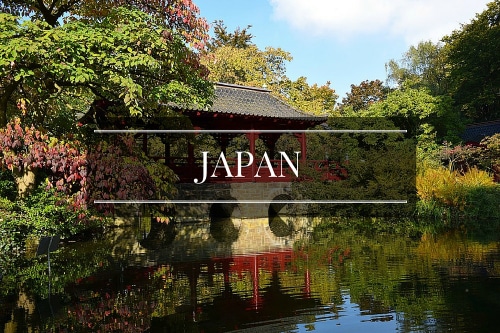
Male life expectancy: 81.13 years
Female life expectancy: 87.99 years
Overall life expectancy: 84.46 years
It is a fairly well-known fact, and perhaps even a bit of a cliché, that the Japanese are highly disciplined people in general. This is evident not only in their behavior but also in their lifestyle, which could be the reason why the country has such high life expectancy. Okinawa, a small island in the East China Sea, is famous worldwide for its high number of centenarians.
Contrary to what most people believe, the Japanese are less reliant on cars than other Asians. They have a tendency to walk whenever they can as it is good for their health.
Hygiene levels in this country are very high. In fact, a “Garbage Cleaner” is usually referred to as a “Health Engineer”. Getting this job isn’t easy, as a course has to be passed and applicants must be certified. While the average salary for this job is barely US$ 300 in other countries, Health Engineers in Japan get paid almost US$ 8,000 a month. As a result, Japan has a record of keeping diseases to a minimum.
On average, the Japanese eat a balanced diet, with plenty of fish, leafy greens, tofu, fruits, vegetables and seaweed. They practice Hara Hachi Bu, which means that they eat only till they are 80% full. This country, therefore, has one of the lowest adult obesity rates (about 3%) worldwide.
Another interesting fact about the Japanese is that they are compassionate towards their co-workers and other members of the society, regardless of how stressed they are.
Their overall healthier lifestyle is bound to increase the number of years they live.
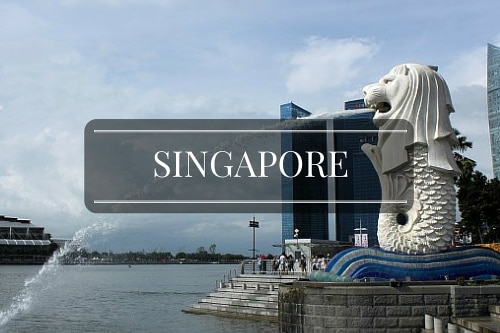
Male life expectancy: 81.86 years
Female life expectancy: 87.07 years
Overall life expectancy: 84.38 years
The world’s only island city-state, Singapore is known for its cultural diversity. The population is a mix of Singaporean, Malay, Indian, Chinese, Indonesian and Bengali. This prosperous island is often referred to as the Garden City, the Lion City, or the Red Dot. High life expectancy in Singapore is generally attributed to three factors: healthcare, cleanliness, and a lack of natural disasters or human conflict.
With the 3rd highest GDP per capita, this country can afford good healthcare for all. In the early 1980s, the health authorities of Singapore realized that it had an aging population and the average lifespan of its citizens was on a steady rise. This foresight, combined with proper planning and execution has resulted in world-class healthcare facilities for seniors. Almost all the residents have easy access to healthcare of excellent quality.
It is also important to note that Singapore happens to be one of the cleanest places in the world. This high level of hygiene reduces the risks of harmful diseases.
Traditional Singaporean cuisine has a strong mix of several cultures and is high in grains, vegetables, fruits, and lean meat. People tend to eat healthier food as compared to most Western countries and many other Asian countries too.
The authorities encourage Singapore’s population to lead a healthy lifestyle in terms of diet, exercise, and stress-management.

Male life expectancy: 81.52 years
Female life expectancy: 87.59 years
Overall life expectancy: 84.48 years
A tiny island located in the South China Sea, Macau is steadily reaping the benefits of its thriving economy. Its small population with a high GDP per capita also plays a significant role in increasing the life expectancy of its residents.
Most of the country’s revenue is generated from visitors, who take advantage of the liberalized gaming industry. About 70% of Macau’s income comes from gambling profits, and the government invests a substantial portion of this money into the improvement of public healthcare. As a result, the healthcare system across the island is world-class, with dozens of state-of-the-art medical facilities and a very high doctor-to-patient ratio (1.5 doctors for every thousand people).
Macanese food is a combination of Asian and fusion cuisine. Since the country is largely funded by the Portuguese, their diets contain a mixture of Portuguese and Asian dishes that are high in healthy herbs and spices.
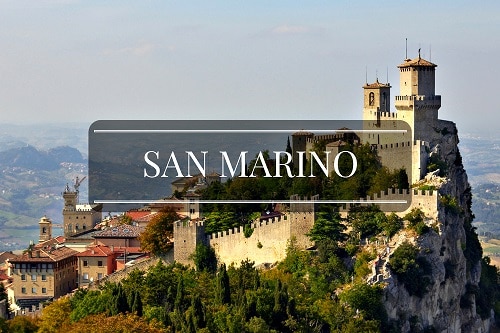
Male life expectancy: 80.64 years
Female life expectancy: 85.94 years
Overall life expectancy: 83.18 years
Many people haven’t even heard of San Marino, an independent country that is completely landlocked by Italy, even though it is believed to be one of the oldest surviving republics in the world. With a population of 33,400, San Marino is the third smallest state in Europe, after Monaco and the Vatican.
San Marino produces high amounts of wheat, olives, grapes, and corn. Its cuisine is a reflection of its surrounding country, Italy. The Sammarinese eat a balanced diet of fruits, vegetables, grains, pulses and lean meats.
Life expectancy in this nation is high because of its prosperity, high-quality healthcare, balanced diets, and low crime rate. Moreover, a majority of the population is engaged in indoor work, instead of heavy industry and labor.
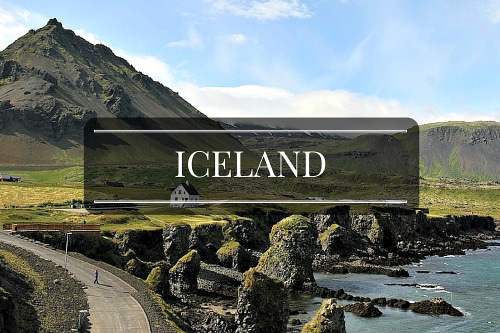
Male life expectancy: 78.98 years
Female life expectancy: 83.54 years
Overall life expectancy: 81.22 years
A Nordic island country situated at the juncture of the North Atlantic and the Arctic Ocean, Iceland is known to be one of the healthiest countries in the world. It has a low infant mortality rate and high life expectancy.
Since there is almost no private healthcare in Iceland, public healthcare is of good quality, on par with European standards. A considerable proportion of the government’s spending is assigned to healthcare. Moreover, 85% of the system is funded by taxes. Everyone living in this country is entitled to healthcare, regardless of social status.
When it comes to food, Icelanders like to keep it simple. Their diets include fresh, pure ingredients such as lean meat, fish, fruit, vegetables and artisanal dairy. Since local produce is mainly grown in greenhouses, it contains low amounts of pesticides.
A majority of Icelanders beat the winter blues by ice climbing or hitting the gym. During summer, they often spend their time engaging in outdoor activities such as kayaking, rock climbing and mountain climbing.
Like in most other countries, good public healthcare, a balanced diet and high exercise levels increase the longevity of residents. However, Icelanders also attribute their long lives to other factors such as their water therapy (hot springs), social bonds and gender equality.

Male life expectancy: 80.18 years
Female life expectancy: 85.71 years
Overall life expectancy: 82.78 years
In spite of its high population density, Hong Kong has one of the highest life expectancies across the globe. One of the main reasons of this is diet.
It is rare to see an overweight person in Hong Kong (not including foreigners). The local population consumes high amounts of steamed rice, broth, fish, vegetables, and congee. Salt, sugar and high-carb ingredients are rarely used in their cooking. The people of Hong Kong also have the tendency to drink a lot of herbal or green tea, which is high in antioxidants.
People in Hong Kong also have the tendency to lead a very active (not necessarily stressful) lifestyle, which improves their overall health.

Male life expectancy: 80.51 years
Female life expectancy: 84.92 years
Overall life expectancy: 82.65 years
Situated between Spain and France, Andorra was considered one of the poorest nations in Europe a few decades ago. However, things changed after World War II, when this country became a very popular tourist destination. Today, the 71,000 inhabitants of Andorra enjoy all the benefits of a booming economy, including high-quality public healthcare facilities.
Andorrans lead an active but stress-free life. They are surrounded by plenty of nature and fresh air, which is great for their health. Their diet contains high amounts of dairy and lean meat.

Male life expectancy: 80.1 years
Female life expectancy: 84.81 years
Overall life expectancy: 82.39 years
For several years now, Switzerland has been topping the list of “the best places to live”, for various reasons. This country offers great quality of life, a pollution-free environment, healthcare, opportunities, stability, and safety to all its residents. It is also known for its tranquil, stress-free and healthy lifestyle.
In addition to a stable economy and good healthcare, this nation offers its residents neutrality. This means that people are unlikely to lose their lives in armed conflict. Moreover, Switzerland is one of the happiest countries in the world, which definitely contributes to residents’ longevity.

Male life expectancy: 79.72 years
Female life expectancy: 85.20 years
Overall life expectancy: 82.39 years
The island of Guernsey is a British Crown dependency that is located in the English Channel but isn’t a part of the UK. The main reason for the high life expectancy in this country is the wealth of the island.
Citizens of Guernsey pay low taxes and can afford the best in terms of nutrition and healthcare. More than 50% of the population earns its living from the financial industry, which mainly includes high-paying desk jobs. A very limited percentage of the people are engaged in heavy industry.
Other nations
Some of the other countries that also ranked quite high on the life expectancy index included Israel, Luxemburg, Australia, Italy, Sweden, Liechtenstein, Jersey, France, Canada, Norway, and Spain. Most of these places have in fact become popular expat destinations in recent times.

